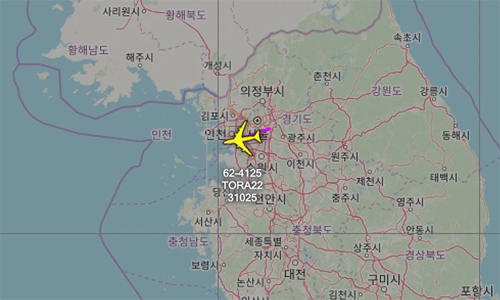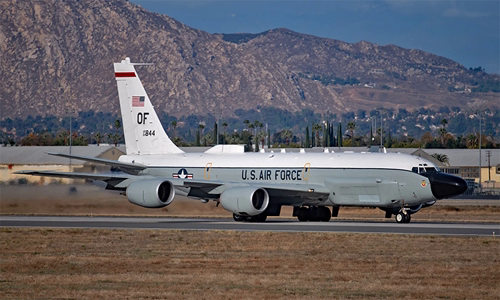Many US reconnaissance planes repeatedly operated near the North Korean border after Pyongyang threatened to "send Christmas presents" to Washington.
Aircraft Spots' data, which specializes in tracking aircraft around the world, shows that US RC-135 reconnaissance aircraft have flown several times near North Korea, including the southern airspace of the Demilitarized Zone (DMZ). These aircraft scouts can use sensors to monitor activity deep inside the Korean territory when flying in Korean or international airspace.

RC-135W reconnaissance aircraft flying near the inter-Korean border on 11/12 Photo: Aircraft Spots
The flights to gather intelligence, aerial surveillance and reconnaissance near North Korea were conducted on a dense frequency after Pyongyang announced sending "Christmas gifts" to Washington on December 3 and advanced. "Very important trial" on Sohae 5 days later.
RC-135 is one of the most powerful intelligence reconnaissance lines of the US Air Force. RC-135 can detect, classify and locate anti-aircraft radar positions and track enemy communications. The RC-135's crew consists of 26 people, including language and analytical experts who can process information instantly to send it to the headquarters in real time.
"North Korea often declares before taking action, so does this launch. I think the 'gift' is a long-range ballistic missile. We are watching," commander of Thai Binh Air Force Command. Duong (PACAF) Charles Brown said on December 17.

RC-135V reconnaissance aircraft at Air Force Base March, California in December Photo: US Air Force
In addition to RC-135, the United States has a number of other mechanical scouts to monitor North Korea in recent days. At least one RQ-4B Global Hawk unmanned aerial reconnaissance aircraft flies at extremely high altitudes with a tilt angle to photograph areas deep within North Korea.
The US Navy also conducted reconnaissance of P-3C aircraft to gather intelligence in North Korea. The P-3C is part of the 40th patrol squadron, currently deployed at Kadena Air Base on Okinawa Island, Japan. P-3C reconnaissance aircraft equipped with coastal surveillance radar (LSRS) AN / APS-149 can collect intelligence on land.



 NikolaMandov
NikolaMandov







